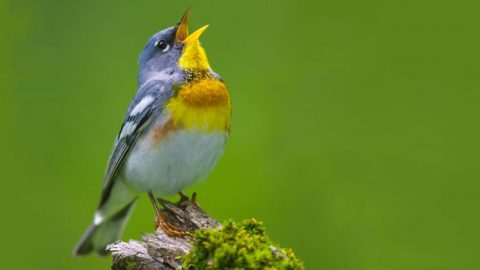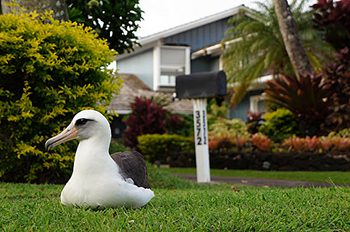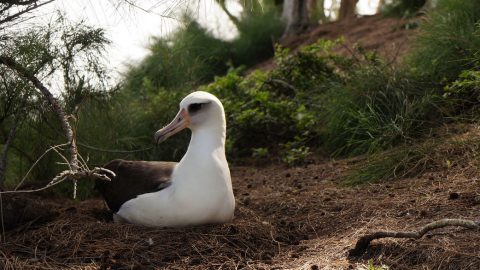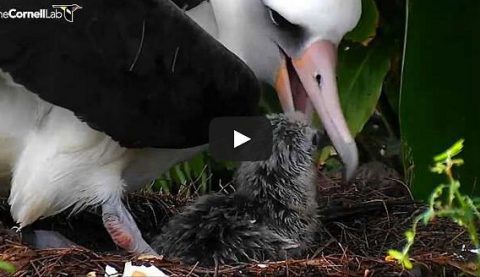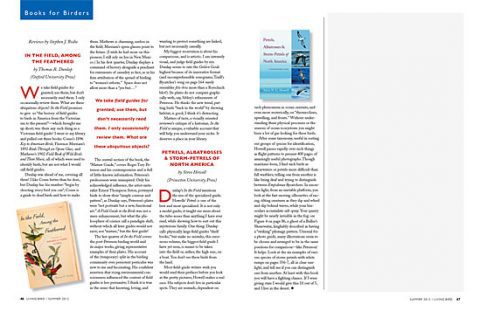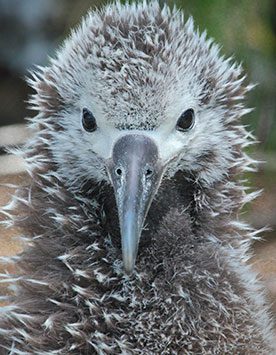Impossible Journeys of the Laysan Albatross
Excerpted from Holy Mōlī, by Hob Osterlund Published by Oregon State University Press
April 11, 2017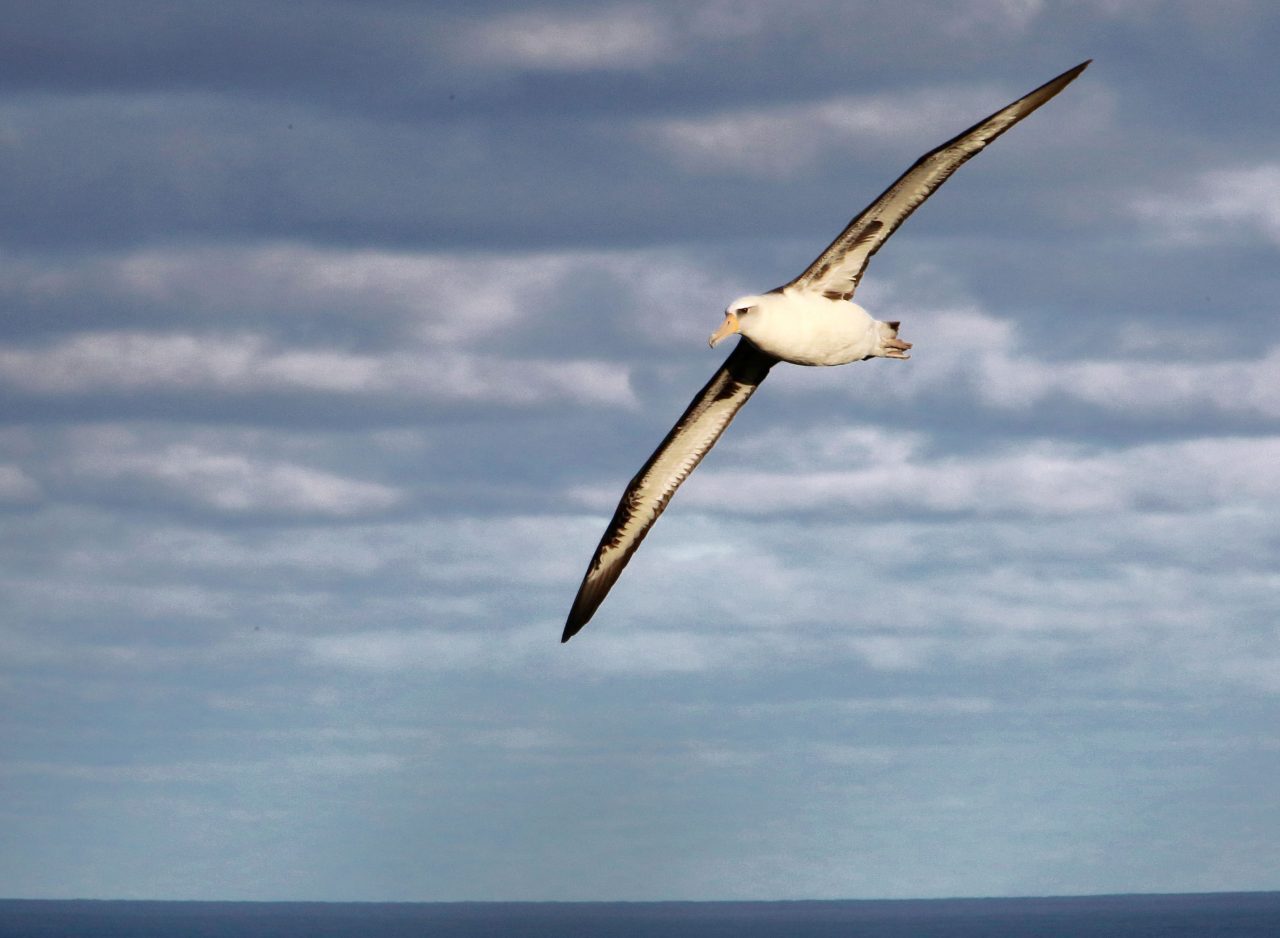
From the Spring 2017 issue of Living Bird magazine. Subscribe now.
Recently the National Weather Service reported a bizarre cloud formation moving erratically over southern Illinois. The “biological targets,” as the NWS called them, turned out to be a huge swarm of monarch butterflies migrating south. Despite risks related to drought and dwindling milkweed, they were headed to Mexico. If you’re an insect that weighs less than a postage stamp, how do you even consider a trip across the border? What if your brain is no bigger than the tip of a pencil, then what?
Laysan Albatross are gargantuan compared to monarchs. Still, you’d be hard pressed to get a radar image of them unless they’ve gathered to feed at some mass squid spawn or the smorgasbord surrounding a factory fishing ship. At sea there is nothing albatrossian that resembles flocks of finches, parliaments of owls, or murders of crows. “Colony” is a collective term, but it refers only to the time they spend on the ground during nesting season. In other words, about 5 percent of their lives.
To make an accurate map of meandering albatross, you have to be a scientist with permits and access to a sizable colony. You have to capture and release a few parents, then wait for the birds to return with data. The good folks from Oikonos Ecosystem Knowledge, Pacific Rim Conservation, and the U.S. Geological Survey accomplished all these tasks in the summer of 2014. They taped temporary lightweight GPS tags to the back feathers of a dozen birds and tracked them over a time span of 79 days. They assigned an individual color to each bird and superimposed their flights on a map. The visual result: bright multicolored lines—each line depicting the travels of a single bird—extending over a vast expanse of ocean.
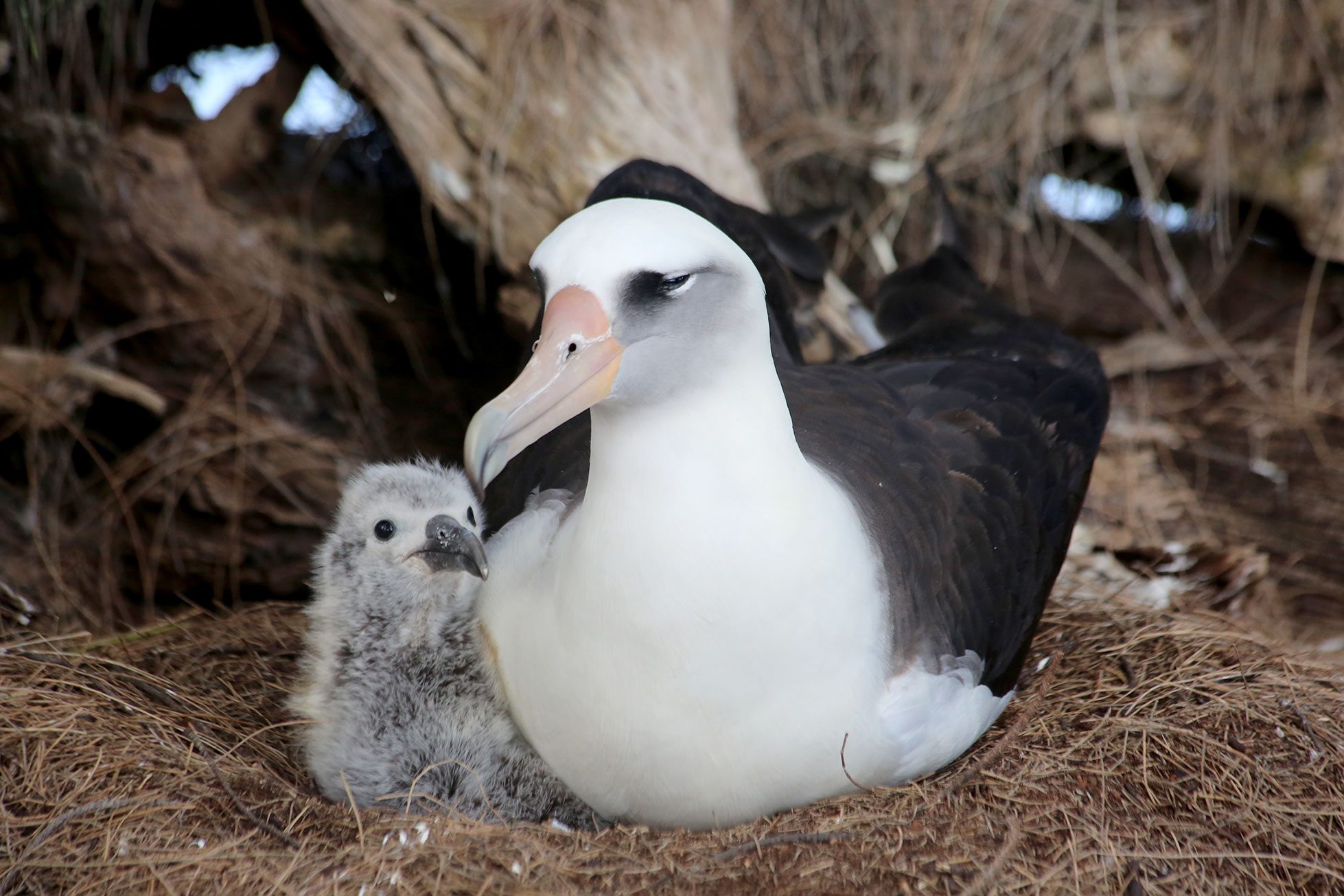
I showed the map to a few friends, and it turned out to be an interesting Rorschach. One person saw strands of candy, sweet and full of promise. Another person saw a frightening pattern of ocean depletion and pelagic plastic. One person saw the earth exhaling, another saw a fire. One artist saw an image of colorful streamers billowing in the wind. He was most impressed with how the birds’ origins and destinations were always the same. “What’s most mind-blowing,” he said, “is not the fact that they can fly such long distances but that they find their way home at all.” Like dozens of swifts diving down a chimney to roost, the streamers converged, swirled, and disappeared into a single point, signified on the map by a bright yellow star.
Of course, the birds’ real destination was minuscule, and much smaller than the yellow star made it appear. The actual geographic location on Kaua’i was a fenced bluff at the edge of a botanical garden with an area smaller than an American football field. About 40 pairs of birds nested there, and dozens of subadults came and went, searching for the perfect mate. With such easy access to the trade winds, it was a great spot for a colony. There was no need for a runway. The birds simply walked to the cliff, spread their wings, and were summoned heavenward. Once airborne, they banked north toward Alaska.
Related Stories
If the distance from Kaua’i to the southern Aleutians is roughly 2,000 miles, and the birds’ east-west foraging range is about the same, the colorful streamers were billowing over an area of about 4 million square miles. Compare and contrast: the entire United States is 3.8 million square miles. In other words, to find food for their chick, a pair of Laysan Albatross may search an area the size of the entire United States. Talk about your hard-working parents.
Even though traveling such distances is unimaginable, the feat is trumped by the extraordinary fact that albatross can find their way home in such an empire. If a pyramid can be declared a Wonder of the World and a person can be anointed a saint, shouldn’t there be awards for nature’s most astounding achievements? The competition would be crazy, but if I ever got a chance to serve on that nominating committee, I would lobby for albatross navigation. Ask yourself if you could find a few tiny acres in so many millions, especially if you had no landmarks to guide you. Of course you couldn’t; none of us could. Even if you were a sea captain with a sextant and a feel for celestial guidance, Pacific skies are often layered with clouds, so steering by the stars would prove difficult anyway.
We humans are just starting to learn how it is we can find our way across town. The 2014 Nobel Prize for Medicine was awarded to three scientists who discovered the mechanism of our inner GPS. They described “place” and “grid” nerve cells that are responsible for giving us an idea how to get to places without having to consult Garmin at every turn. Their first clue to the discovery came from studying a rat’s brain. If we can learn about wayfinding from caged rodents whose ancestors have lived in captivity for hundreds of generations, imagine what we could learn from the wild, long-distance travelers among us. Author and conservationist Carl Safina spoke of their many talents. He described how dolphins and bats virtually image a high-definition sonic world, in darkness and at great speed. “Many creatures,” he said, “blow us away with sight, hearing, smell, response time, diving and flying capacities, sonar abilities, migratory and homing abilities.” The list goes on.
What if albatross don’t find their way home with their brains? Even if they steer by the earth’s magnetic field, magnetoception doesn’t tell the whole story. Even if they’re guided by what they smell, their olfactory expertise doesn’t complete the picture either. Plus there’s the matter of timing to consider. Not just time of year, but the rendezvous time coordinated with mates whom they presumably have not seen for months. How do they know whose turn it is on the egg, and whose turn it is to feed the baby? Even if we think “instinct” alone entirely answers the question, that doesn’t mean instinct itself isn’t a miracle.
Maybe the birds match each other’s frequency. Maybe they visualize the outcome they want and follow that vision. Maybe they just go with the flow, trusting wind, gravity, stars, smells, and magnetism to guide them. Maybe they are swayed by stories they hear from other birds. Maybe they find their way home with all their hearts, guided by love. Who can rule out any of these possibilities?
Just like they are rooted to their place of hatch, I am anchored to certain immutable truths: when and where I was born, who my ancestors were, what my primary culture admires and abhors, what wars exploded, who broke my heart. All these details sleep in my bed with me, beyond my awareness and more central to my life than I can possibly imagine.
Old friends of mine, a married couple, volunteered for a medical mission many years ago. They adopted two infants from Bangladesh and brought them back to the United States. One daughter did well, but the other was troubled. By the time Maria was 14, she was regularly skipping school, using drugs, and doing her best to get pregnant. To prevent her from running away, my friends had to sleep on the floor outside her bedroom. When she did manage to escape, Maria often mysteriously wound up at the city train station. Her exhausted parents ran out of viable therapeutic options, so they took her for a visit to Dhaka. They hoped her birth home would ground her and give her a sense of belonging. They sought counsel from the adoption agency. When the representative opened their file, my friends discovered an astonishing fact: their daughter’s biological mother died in childbirth. She had been living in a train station.
But isn’t impossibility a crucial aspect of any pilgrimage? If it were easy, I wouldn’t value it. It has to be unfathomable. How possible is it for a monarch to migrate across a continent? For an albatross to find her chick on a tiny volcanic rock in the most remote island chain in the world? When I consider the challenges my fellow beings face, how can I not emulate their creativity and courage?
As author Dani Shapiro says in her book Still Writing, “We cannot afford to walk sightless among miracles.”

All About Birds
is a free resource
Available for everyone,
funded by donors like you
American Kestrel by Blair Dudeck / Macaulay Library
